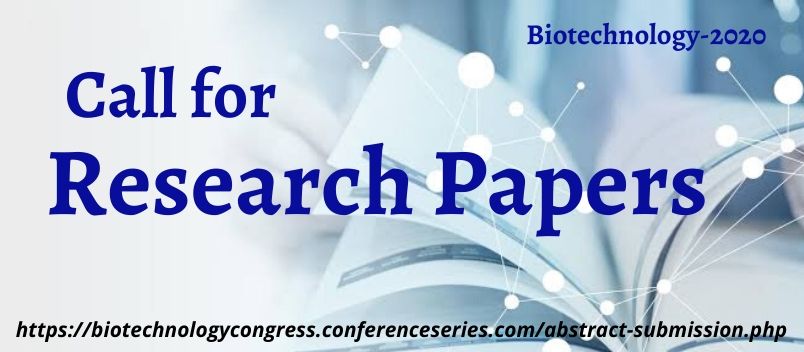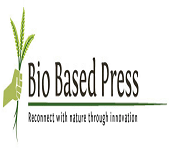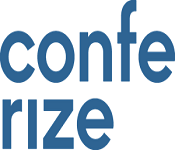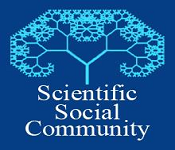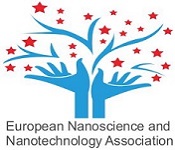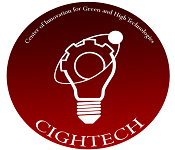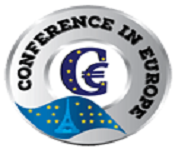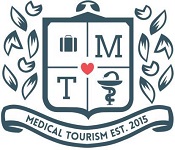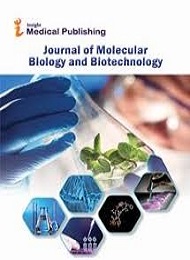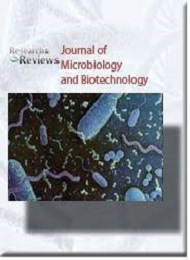Theme: Recognizing and Analyzing the modern ascensions in the field of Biotechnology
Biotechnology-2020
This time Conference Series LLC will be organizing the 25th World Congress on Biotechnology at Amsterdam, Netherlands. The theme of this year’s meeting is "Recognizing and Analyzing the modern ascensions in the field of Biotechnology" which will provide an international platform for discussion of present and future challenges in Surgical procedures includes prompt keynote presentations, Oral talks, and Exhibitions. Novel research and discoveries in Biotechnology points in announce learning and offer new thoughts among the experts, industrialists and understudies from investigating the region of biotechnology to share their examination encounters and enjoy intelligent exchanges at the occasion.
Biotechnology-2020 includes international attendee workshops, lectures, and symposia, including a designated registration area, a refreshment break, and gala lunch. CEOs, COOs, Directors, Vice Presidents, Co-directors, Biotechnologists, Managing Directors, Industry Safety Officers, Environmental & Plant Scientists, Doctorates, Professors, Post Doctorate Fellows, Dealers of Consumer Products/ Managers, Pharmaceutical Scientists & Students can join 25th World Congress on Biotechnology, to showcase their research globally & enhance their knowledge & skills in the field of Biotechnology. So come and join the leading experts and allied professionals in the 25th World Congress on Biotechnology, April 27-28, 2020 Amsterdam, Netherlands to keep up with the rapidly accelerating pace of change that is already having an impact on the field Biotechnology and will continue to in the future.What’s New?
Conference Series LLC is the longest running independent life science events company with a predominantly academic client base. Our multi-professional and multi-specialty approach creates a unique experience that cannot be found with a specialist society or commercially.
Conference Series LLC are corporate members of the following organizations
-
Royal Society of Biology
-
IBMS
-
British Society for Immunology
Opportunities for Conference Attendees
For Researchers & Faculty:
-
Speaker Presentations
-
Poster Display
-
Symposium hosting
-
Workshop organizing
For Universities, Associations & Societies:
-
Association Partnering
-
Collaboration proposals
-
Academic Partnering
-
Group Participation
For Students & Research Scholars:
-
Poster Competition (Winner will get Best Poster Award)
-
Young Researcher Forum (YRF Award to the best presenter)
-
Student Attendee
-
Group Registrations
For Business Delegates:
-
Speaker Presentations
-
Symposium hosting
-
Book Launch event
-
Networking opportunities
-
Audience participation
For Companies:
-
Exhibitor and Vendor Booths
-
Sponsorships opportunities
-
Product launch
-
Workshop organizing
-
Scientific Partnering
-
Marketing and Networking with clients
Conference Series LLC organizes many International Biotechnology Meetings annually across Europe, Austria, Ireland, Germany, France, Liechtenstein, Lithuania, Finland, Luxembourg, Hungary, Italy, Norway, Poland, Denmark, Macedonia, Greece, Portugal, Romania, Czech Republic, Switzerland, United Kingdom, Belgium, Scotland, Latvia, Ukraine, Sweden, Denmark, Spain, Netherlands Russia, Bulgaria, France, with solitary subject of quickening logical revelations.
Track 1: Industrial biotechnology
Industrial biotechnology is a way to pollution prevention, resource management, and cost reduction. It is generally referred to as the third wave in biotechnology. The application of biotechnology to industrial processes is not only converting how we manufacture products but is also furnishing us with new products that could not even be imagined a few years ago. Industrial biotechnology implicates working with nature to maximize and improves existing biochemical pathways that can be used in manufacturing.
1.1 Production of Enzymes
1.2 Downstream process
1.3 Protein engineering
1.4 Biological/biomedical materials
1.5 Biofuels
1.6 Human proteins
Track 2: Marine Biotechnology
Marine Biotechnology is an innovative field of Science Research and technology concerning the support of living organisms with marine products and tools. It is an innovative way to produce genetically modified drugs, food and energy to overcome global demand. The Exploitation of Biotechnology for drug discovery including enzymes, antibiotics, biopolymers and chemical compounds from marine sources.
2.1 Aquatic Microbial Ecology
2.2 Oceanography
2.3 Aqua Culture Biotechnology
2.4 Biotechnology in fish breeding
2.5 Biotechnology and fish health management
Track 3: Recombinant DNA technology
rDNA technology is the pairing together of DNA molecules from two distinct species that are infused into a host organism to yield new genetic combinations that are of value to science, medicine, agriculture, and industry. Since the target of all genetics is the gene, the fundamental goal of laboratory geneticists is to isolate, characterize, and manipulate genes. This technology has made it possible to separate one gene or any other segment of DNA and allowing researchers to determine its nucleotide sequence, examine its transcripts, modify it in highly definite ways, and replace the altered sequence into a living organism.
3.1 Mutation analysis
3.2 Production of recombinant proteins
3.3 Cell transformation
3.4 Molecular Biology
3.5 Virology
3.6 Gene probes and diagnosis of disease
Track 4: Animal biotechnology
Animal biotechnology is a category of biotechnology in which molecular biology techniques are used to genetically engineer (i.e. modify the genome of) animals in order to enhance their strength for pharmaceutical, agricultural or industrial applications. Animal biotechnology has been used to produce genetically modified animals that manufacture therapeutic proteins, are resistant to disease or have improved growth rates.
4.1 Sustainability in animal production
4.2 Transgenic animals
4.3 Animal models of human diseases
4.4 Molecular farming and animal bioreactors
4.5 Animal feed and Nutrition
Track 5: Environmental Biotechnology
Environmental biotechnology in particular is the application of processes for the protection and rebuilding of the quality of the environment. Environmental biotechnology can be used to identify, prevent and remediate the emission of pollutants into the environment in a number of ways. Solid, liquid and gaseous wastes can be modified, either by recycling to make new products, or by purifying so that the end product is less toxic to the environment. Replacing chemical materials and processes with biological technologies can lower the environmental damage. In this way environmental biotechnology can make a significant contribution to sustainable development.
5.1 Environmental Pollution
5.2 Air pollution and control
5.3 Global environmental problems
5.4 Biotechnology in restoration of degraded lands
5.5 Biotechnology for treatment of industrial effluents
5.6 Bioremediation & Biodegradation
Track 6: Food and Nutritional Biotechnology
Recently many advances in food industry represent the great role of food biotechnology achieved with the application of technology such as food preservation, food processing, canning, fermentation and modification of genes of plants, animals and microorganisms to reach current market level. Nutritional biotechnology describes nutrition process as well as the components of food, the balance of nutrition in food and their reaction in health and improves global food security that would interest in both the developing and developed countries.
Track 7: Protein Engineering
Protein Engineering is one of the key tools for modern biotechnology. Utilizing a wild-type compound which is found in nature isn't adequate for a modern procedure. It must be designed and streamlined as far as movement, selectivity, and dependability. A few catalysts may have the popularity for mechanical utilize, however because of its compound properties, it might lose its significance. Hence these compounds are adjusted so it can withstand cruel conditions. These properties will contain to augment the yield.
7.1 Computational methods in protein engineering
7.2 Artificial Metalloenzymes
7.3 Protein engineering using CRISPR technology
7.4 Computational methods in protein engineering
Track 8: Nano Biotechnology
Nano biotechnology alludes to the crossing point of nanotechnology and life science. Given that the subject is one that has just developed as of late, Bio nanotechnology and Nano biotechnology fill in as cover terms for differently related advancements. The most essential destinations that are every now and again found in Nanoscience include applying Nano devices to significant therapeutic/organic issues and refining these applications. Growing new instruments, for example, peptoid Nano-sheets, for medicinal and organic reasons for existing is another essential target in nanotechnology. New Nano-devices are frequently made by refining the utilization of the Nano-apparatuses that are as of now being utilized. The imaging of local biomolecules, natural films, and tissues is additionally a noteworthy point for the Nanoscience scientists. Different subjects concerning Nanoscience incorporate the utilization of cantilever exhibit sensors and the use of Nano-photonics for controlling sub-atomic procedures in living cells.
8.1 Nano-biosensors
8.2 Nano-biomedicine
8.3 DNA-based Nanostructures
8.4 Advances in Nano-biotechnology
8.5 Novel application of nanoparticles
8.6 Nano-Antibodies
8.7 Lipid nanotechnology
Track 9: Pharmaceutical Biotechnology
Pharmaceutical Biotechnology is the science that covers all advances required for creating, assembling and enlistment of organic medications. Pharmaceutical Biotechnology is an inexorably imperative zone of science and innovation. It contributes in plan and conveyance of new remedial medications, symptomatic operators for therapeutic tests, and in quality treatment for amending the medicinal manifestations of innate sicknesses. The Pharmaceutical Biotechnology is generally spread, running from numerous moral issues to changes in medicinal services hones and a huge commitment to the advancement of the national economy. Biopharmaceuticals comprise huge organic particles which are proteins. They focus on the basic components and pathways of an infection or infirmity; it is a moderately youthful industry. They can manage focuses on people that are not open with customary meds. Pharmaceutical organizations make and market drugs, domesticated animals feed supplements, vitamins, and a large group of different items.
9.1 Recombinant vaccines
9.2 Pharmaceutical products of DNA Technology
9.3 Biologics and Biosimilars
9.4 Monoclonal Antibodies
9.5 Drug Designing & Discovery
Track 10: Medical Biotechnology
Restorative biotechnology alludes to a therapeutic or analytic specimen or an antibody that comprises of or has been created in living beings and might be produced by means of recombinant. Therapeutic Biotechnology tremendously affects addressing the necessities of patients and their families as it not just includes pharmaceuticals and diagnostics that are made utilizing a biotechnological procedure, but also in quality and cell treatments and tissue built items. The lion's share of creative medications, regardless of whether made utilizing biotechnology or by means of a concoction combination like a conventional little atom pharmaceutical, and also numerous demonstrative items, are made accessible by applying present-day biotechnology in their improvement and assembling.
10.1 Monoclonal Antibodies
10.2 Biomedical Innovations
10.3 Viral Vector producing for sequence Therapies
10.4 Pharmacogenomics
10.5 Tissue engineering & regenerative medicine
Track11: Biomass and Bioenergy
Bioenergy is sustainable imperativeness which is gotten from natural sources. Biomass is portrayed as living or starting late dead living creatures and any plant or animal. Biomass can be used to convey sustainable power, warm essentialness, or transportation invigorates. Biomass is any characteristic material which has secured sunshine as engineered essentialness. In this strict sense, biomass incorporates each and every living thing. With respect to biomass essentialness, nevertheless, the term implies those yields, stores, and other natural materials that can be used as a substitute for fossil powers in the age of imperativeness and distinctive things.
11.1 Renewable Energy
11.2 Biofuels
11.3 Processes for Bioenergy
11.4 Processes for Bioenergy
11.5 Biogas
11.6 Biomass
Track 12: Synthetic Biotechnology
Frameworks and Synthetic Biotechnology is a generally new field in biomedical research. It centres on building new or changed flagging proteins to make wanted flagging pathways in the cell. Each living cell is a greatly complex machine communicating a huge number of various proteins. Because of sublime control, numerous cells, for example, photoreceptors and different neurons in vertebrates can live for quite a long time. Cells can likewise self-repeat by division, where both little girl cells are superbly suitable. Common choice (the "visually impaired watchmaker", to utilize Dawkins' demeanor) burned through a huge number of year to accomplish this flawlessness. Because of clarification of the complexities of cell administrative instruments, we would now be able to play advancement on our chance scale: re-plan proteins and flagging pathways to accomplish our ends. Systems and Synthetic Biology is a novel field that discovers its starting point at the convergence of science and building. It includes outlining and development of organic frameworks or gadgets that can be connected in differed areas to get determined outcomes. It's a multidisciplinary exertion made by researchers to comprehend the working of natural life forms, cells and qualities and usage of counterfeit hereditary procedures to give particular attributes to a creature. It can even be utilized to build up a totally new natural framework.
12.1 Laboratory Automation and Robotics for Synthetic Biology and Bio-systems engineering
12.2 Production of Natural Products and Other Small Biomolecules
12.3 Synthetic Biology Tools\
12.4 Genome Construction, Editing, and Design
12.5 Artificial Systems for Biomolecules Production and Pathway Prototyping
Track 13: Genomics and Proteomics
Genomics is an interdisciplinary field of exploration of atomic science. A genome is an entire arrangement of DNA inside a solitary cell of a living being, and in that capacity, centres around the capacity, structure, development, of genomes. It points out the aggregate measurement and portrayal of qualities, which coordinate the creation of proteins with the help of courier atoms and catalysts. Genomics additionally includes in the examination and sequencing of genomes. The proteome is the arrangement of whole proteins that are delivered or adjusted by a life form or framework. This shifts with time and unmistakable prerequisites that a cell or life form experiences. Proteomics is an interdisciplinary area that had profited significantly from the hereditary data of the Human Genome Project and it likewise covers rising logical research from the general level of intracellular protein structure and its own particular special action designs. It is likewise an imperative part of utilitarian genomics and their subsidiaries.
13.1 Proteomics for systems biology
13.2 Human plasma proteome
13.3 Functional genomics & Structural genomics
13.4 Application of Genomics and Structural Proteomics
Track 14: Cell Biology
The investigation of living life forms at a more profound level at cell premise is known as microbiology. Microbiology has different subjects and its significances fluctuate in each sign. Some are in charge of a noteworthy extent of the sicknesses influencing people as well as plants and creatures, while others are crucially imperative in the support and change of our condition. A Cell is a compound framework that can keep up its structure and replicate. Cells are the key unit of life. The body of a few creatures like microscopic organisms, protozoans, and some green growth is comprised of a solitary cell while the group of parasites, plants, and creatures are made out of numerous cells. The human body is worked out of around one trillion cells. Nothing not as much as a cell is alive. Gathering of cells can be composed and work as multicellular living beings. The life of a cell relies on a huge number of substance response and association composed with the hereditary guideline of the cell and its condition.
14.1 Stem cell cytology
14.2 Plant and Animal cell biology
14.3 Cell growth and development
14.4 Cell biochemistry
14.5 Virology
Track 15: Biomaterials and Regenerative Medicine
Biomaterials are those materials which are usually made of multiple components that interact with biological system. Biomaterials are normally used in medical application like drug delivery, therapeutics, and diagnostics to replace a natural function. The most commonly used biomaterials are polymers. All biomaterials meet certain criteria and regulatory requirements before they can be qualified for use in medical applications. Biomaterial Science has a broad scope that covers the fundamental science of biomaterials through to their biomedical applications.
Regenerative medicine is the branch of medicine that develops methods to repair or replace damaged or diseased cells, organs or tissues. Regenerative medicine includes the generation and use of therapeutic stem cells, tissue engineering and the production of artificial organs. One of the greatest needs for regenerative therapy is in the field of whole organ replacement. The first bone marrow and solid-organ transplants were done years ago. But advances in developmental and cell biology, immunology, and other fields are new opportunities to refine existing regenerative therapies and develop new ones.
15.1 Whole organ replacement
15.2 Immunology
15.3 Molecular Organization of cells
15.4 Bone marrow
15.5 Regenerative Therapies
Track 16: Stem Cell Biotechnology
Stem cell biotechnology is an innovative field of Science Research and technology that develops therapeutics through manipulation of stem cells that is useful in regenerative medicine. Stem cell technology offers hope of effective treatment for a variety of malignant and non-malignant diseases. You can understand current research topics on stem cells, types of stem cell such as hematopoietic and non-hematopoietic stem cells, techniques used in stem cell transplantation, tissue regeneration and stem cell banking. The stem cell biotechnology session in Biotechnology Congress will deliver novel therapeutic techniques and advancements in stem cell biotechnology.
16.1 Stem Cell Transplantation
16.2 Tissue Regeneration and Therapeutics
16.3 Stem Cell Banking
16.4 Human Stem Cell and Regenerative Medicine
16.5 Genome Editing in Stem Cells
16.6 Plant Stem Cells & Veterinary Stem Cells and their Applications
Track 17: Bioinformatics
Bioinformatics refers to the computational ways of analysis, examination, overseeing, and storage of natural information. Bioinformatics include the examination of organic data utilizing PCs and measurable systems, the exploration of creating and using PC databases and calculations to quicken and improve natural research. Bioinformatics is utilized as a part of breaking down genomes, proteomes (protein arrangements), three-dimensional demonstration of biomolecules and biologic systems etc.
17.1 Immuno- and Chemo-informatics
17.2 Glyco Bioinformatics
17.3 Signal processing
17.4 Functional & Structural genomics
17.5 Sequence alignment
Track 18: Applied Biotechnology
The applied biotechnology major deals with the scientific background and laboratory experience necessary for the biotechnology and pharmaceutical industries, or for advanced study in the applications of biotechnology and molecular biology for the use and improvement of plants, animals, and micro-organisms. In addition, it can be to prepare for professional programs in medicine. Multi discipline science of interest in chemistry, biotechnology, microbiology. This interdisciplinary major brings together areas of study such as animals, food science, forestry, entomology, and plants to improve the knowledge and skills necessary to use biotechnology for the improvement of plants, animals, and microorganisms. Gaining theoretical as well as hands-on knowledge in the areas of molecular biology, structural biology and biotechnology molecular biotechnology for renewable energy. Thanks to the courses in project management furthermore, studies in the areas of protein engineering, synthetic biology and, marketing and entrepreneurship, one will also gain insight into business management and learn how projects are planned and carried out in the biotechnology industry.
18.1 Applied Microbiology
18.2 Microbiology
18.3 Molecular Biotechnology
18.4 Synthetic Biology
Track 19: Pharmaceutical Biotechnology and Drug Design
Pharmaceutical biotechnology is a relatively new and growing field in which the principles of biotechnology are applied to the advancement of drugs. Pharmaceutical companies uses biotechnology for manufacturing drugs, gene therapy, pharmacogenomics and genetic testing. Pharmacogenomics is the study of how genes changes a person’s response to drugs. Its objective is to grow rational means to enhance drug therapy, with respect to the patients' genotype, to provide maximum efficiency with minimum adverse effects. The Pharmaceutical Biotechnology is widely spread, ranging from many ethical concerns to changes in healthcare practices and an important contribution to the development of national recession.
19.1 Chemotherapy
19.2 Antibodies
19.3 Human Genomics
19.4 Clinical trails
19.5 Cell therapies
Track 20: Biotechnology Industries in the Market
The Biotechnology Industry is largely divided into the medical and agricultural markets. Although enterprising biotechnology is also applied to other areas, such as the industrial production of chemicals and bioremediation, the use in these areas is still specialized and reserved. On the other hand, the medical and agricultural industries have undergone biotechnology revolutions. This has included new research efforts, development programs, and business strategies to discover, alter, or produce novel biomolecules and organisms through bioengineering. Biotechnology has been involved in the initial drug discovery and screening stages. Most major pharmaceutical companies have active target-discovery research programs heavily dependent on biotechnology.
Track 21: Cancer Biotechnology:
Biotech played and will continue to play an essential role in Cancer, ranging from Monoclonal Antibodies, Immuno-Oncology, CAR-T and everything in between. Cancer is a group of deadly diseases characterized by uncontrolled cell division leading to growth of abnormal tissue. It is also called as degeneration of one type of cell within an organism into something. It is believed that cancers arise from both genetic and environmental factors that lead to aberrant growth regulation of a stem cell population, or by the dedifferentiation of more mature cell types.
The “traditional” ways to tackle cancer are chemotherapy (Chemo) and Radiotherapy. One big problem with these techniques is the lack of specificity as chemo and radiotherapies are targeting cancer cells, but also healthy cells.
21.1 Immuno-Oncology
21.2 Cancer Drug Discovery
21.3 Cancer Drug Discovery
21.4 Cancer Management, And Prevention
21.5 Imaging in cancer
21.6 Organ Specific Cancers
Track 22: Biosensors in biotechnology
A Biosensor is a device that has the potential to observe a particular substance or analyte with high distinction. Examples of such analytes include glucose, lactate, glutamate and glutamine. Most of the biosensors are capable of considering the concentration of an analyte in an aqueous solution, mainly producing an electrical signal, which is considered to be proportional to the analyte’s concentration in its determining range. An Enzymatic Biosensor consists of an enzyme, which identifies and then works with the target analyte producing a chemical signal, a transducer, which produces a physical signal from the chemical one, and an Electronic Amplifier, which first determines and then amplifies the signal.
22.1 Cholesterol Biosensor
22.2 Glucose Oxidase Biosensor for Diabetes
22.3 Thiol Biosensor
22.4 Nitrite Biosensors
22.5 Biomarkers for Diagnosis Diseases
22.6 Implantable Glucose Biosensor
22.7 Superoxide Anion Radical Biosensor
Track 23: Microfluidics for Biotechnology
Microfluidics is both the science which studies the behaviour of fluids through micro-channels, and the technology of manufacturing microminiaturized devices having chambers and tunnels through which fluids flow. Microfluidics deal with very small volumes of fluids, down to femtoliters (fL) which is a quadrillionth of a litre. Fluids react very differently on the micrometric scale than they do in everyday life. These unique features are the key for new scientific experiments and innovations.
Biotechnology-2020 welcomes all the attendees, researchers, presenters, associations and exhibitors from everywhere the globe to Amsterdam, Netherlands. We have a tendency to square measure delighted to ask you all to attend the “25th World Congress on Biotechnology” that goes to be command on April 27-28, 2020 at Amsterdam, Netherlands. This Congress is an interesting and informational conference program collectively with comprehensive lectures, symposia, workshops on informative topics, poster shows and several programs for participants from across the globe. We invite you to Biotechnology-2020 conferences, to share purposeful expertise with scholars from around the world. We look forward to seeing you in Amsterdam, Netherlands.
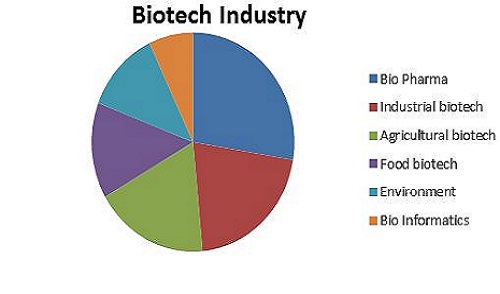
Importance & Scope:
Biotechnology is the technology applied to biology, molecular biology, genetics, and many other subdivisions of biology. Advanced biotechnology develops advanced products to combat diseases, reduce our environmental harm, provide food to hungry, and have safer, cleaner and more efficient industrial manufacturing techniques. So far, more than 250 biotechnology health care products and vaccines have been made available to patients, many for chronic diseases.
More than 13.3 million farmers all across the world utilise agricultural biotechnology to improve yields, prevent damage from insects and pests and reduce the damage done on the environment due to farming. And more than 50 bio-refineries are being constructed over North America to test and refine technologies to produce biofuels and chemicals from renewable biomass, which can further help to reduce greenhouse gas emissions. You can refresh your awareness about the current status in the field and get the name acknowledgement at this 2-day meeting. Biotechnology Congress is an exciting event to highlight growth. We endeavour to convey individuals from various fields and to impact a setting in which they can cooperate synergistically, and ideally make new logical outcomes.
The scope of the journal encompasses, but will not be limited to, the following fields pertaining to bacteria, archaea, viruses, fungi and protozoa: Biochemistry, physiology and molecular biology, genetics and genomics, Ecology, evolution and biodiversity, Cellular microbiology, Environmental microbiology, Pathogenesis and host defence, Clinical Microbiology, Diagnostic Microbiology, Infectious diseases, Antimicrobial therapies and vaccines, Epidemiology and public health microbiology, Applied Microbiology, Industrial Microbiology, Microbiology Education, Microbiology Society, Biotechnology Society, Microbiology Associations, Biotechnology Associations
Biotech Market in Europe
Biotechnology contributes to the modernization of the European industry. They are utilised in a variety of industrial sectors such as healthcare and pharmaceuticals, animal health, textiles, chemicals, plastic, paper, fuel, food, and feed processing. Taking benefits of biotechnology helps the EU economy to grow and employs people, while also promoting sustainable development, public health, and environmental stability. The biotech industry in Europe contributes nearly $7.32 billion in R&D and $23.2 billion in profits. Around 20% of the entirety marketed medications and as much as 50% of all drugs that are in the pipeline are all healthcare biotech goods. The European biotech industry employs approximately 95,000 people.
Biotech Market in USA
The USA biotechnology market size was estimated at USD 270.5 billion in 2013 and is expected to grow at a CAGR of 12.3% growing to the increasing demand for therapeutic and diagnostics solutions such as red biotechnology, recombinant technology, and DNA sequencing. The rising prevalence of diseases such as hepatitis B, cancer, and other orphan disorders is assumed to work as a high-impact rendering driver for this trade in a recent period. Rising government initiatives giving high significance towards the growth of the economy which is expected to boost the biotechnology market to grow over the forecast period.

Global Biotechnology Industry Revenue:
Biotech products proceed to gradually obtain the share from conventional drugs. Between 2010 and 2016 the global biotech segment grew at a CAGR of 3.7 per cent, from $263.7 billion to a projected $293.5 billion,20 with biotech comprising seven of the top 10 drugs in global sales in 2015.21 Over the five years from 2016 to 2021, global biotech revenue is estimated to rise to $314.7 billion. 22 Greater global investments in biotechnology, particularly in emerging economies, will largely drive this growth, and the industry is expected to undergo further commercialization to cater to an ageing population in more developed economies.
Biotechnology applications market is classified into bio pharmacy, bio services, bio-agriculture and bio-industrial. Biotechnology market has been segmented into fermentation, tissue regeneration, PCR technology, Nanobiotechnology, chromatography, DNA sequencing, cell-based assay and others. Total Global Biotechnology market will reach a value worth of USD 414.5 billion by the end of 2018.

Industry Insights
The Global biotechnology market size was estimated at USD 369.62 billion in 2016. Presence of room for partnerships in the sector is expected to drive significant progress in the industry. The companies are focusing on the development of novel techniques and their implementation by collaborating with the other participants. Organizations such as the DBT (Department of Biotechnology) together with government-funded institutions and other autonomous organizations representing the biotechnology sector promote funding to support R&D and new product development endeavours.
The rise in demand for these therapeutics and diagnostic solutions on principles of red biotechnology, DNA sequencing, and recombinant technology is anticipated to fuel growth. Increasing prevalence of diseases such as hepatitis B, cancer, and other orphan disorders is expected to fuel demand in this space.
Target Audience:
Directors, Biotechnologist, Microbiologist, Pharmacist, Researchers, Academic Scientists, Business entrepreneurs, Industry Professionals, Head of department, Professors and Students from Academia in the research of Biotechnology.
-
Academia 60%
-
Industry 20%
-
Biotechnologists 15%
-
Others 05%
Conference Highlights
- Industrial biotechnology
- Marine Biotechnology
- Recombinant DNA technology
- Animal biotechnology
- Environmental Biotechnology
- Protein Engineering
- Food and Nutritional Biotechnology
- Nano Biotechnology
- Pharmaceutical Biotechnology
- Medical Biotechnology
- Biomass and Bioenergy
- Synthetic Biotechnology
- Genomics and Proteomics
- Cell Biology
- Biomaterials and Regenerative Medicine
- Stem Cell Biotechnology
- Bioinformatics
- Applied Biotechnology
- Pharmaceutical Biotechnology and Drug Design
- Biotechnology Industries in the Market
- Cancer Biotechnology
- Biosensors in biotechnology
- Microfluidics for Biotechnology
To share your views and research, please click here to register for the Conference.
To Collaborate Scientific Professionals around the World
| Conference Date | April 27-28, 2020 | ||
| Sponsors & Exhibitors |
|
||
| Speaker Opportunity Closed | |||
| Poster Opportunity Closed | Click Here to View | ||
Useful Links
Special Issues
All accepted abstracts will be published in respective Our International Journals.
- Journal of Molecular Biology and Biotechnology
- Biotechnology & Biomaterials
- Research & Reviews: Journal of Microbiology and Biotechnology
Abstracts will be provided with Digital Object Identifier by


